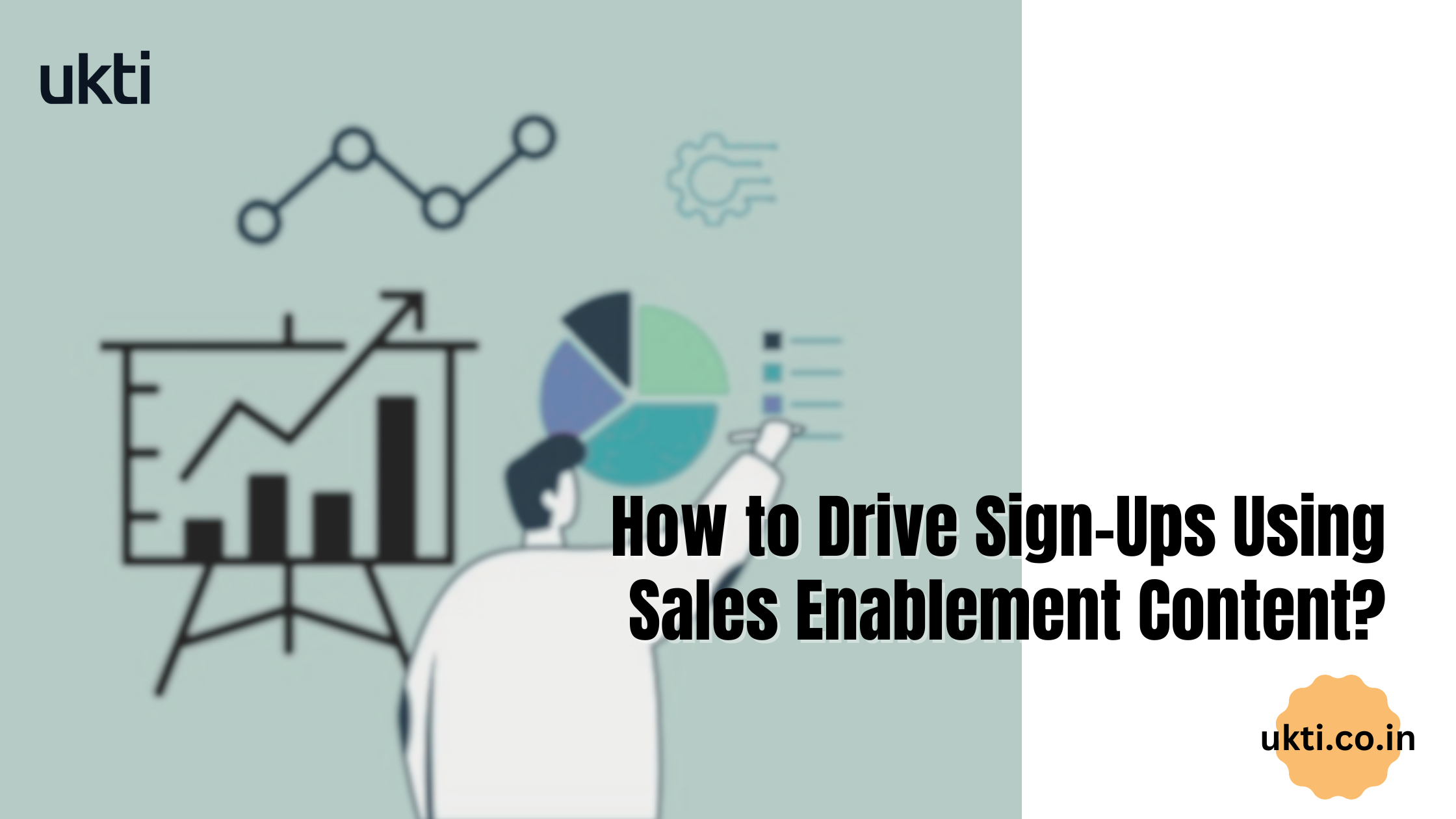Despite a solid content marketing strategy, do you struggle to boost your conversion metrics? Or do your prospects frequently disagree with the sales team over price, features, and ROI? If yes, then your sales team needs better content resources and a well-informed client on their sales call. Sales enablement content helps you do precisely that.
It simplifies the lead journey from a prospect to paying customer. How? By educating them about your offerings and ensuring your sales reps have an informed customer to talk to.
This blog will decode sales enablement content, how it differs from content marketing, and how you can use it to boost sign-ups. So let us dive straight in.
What is Sales Enablement Content?
Sales enablement content empowers your sales team by providing them with relevant resources to address prospect objections and close more deals. It also answers general client queries about your product.
You can design various sales enablement content that sales reps can use throughout the sales process. It could be an infographic, a list of product features, or content dealing with the pain points of a specific customer.
In other words, sales enablement content does the hard part of a sales rep’s job. It answers generic questions, educating buyers and making it easier for reps to close the deal. And if done right, it can help sales reps boost their performance by 15%.
How is Sales Enablement Content Different from Content Marketing?
Sales enablement content is a must-have for brands looking to rope in more customers. However, 70% of customers say they do not receive any content from sales representatives to help them make informed decisions. Why? Due to a lack of clarity around enablement content.
For instance, if sales enablement content is about educating prospects, then the mind begs the question, how is it different from content marketing? Well, there’s one tiny difference—the end goal.
You see, the goal of content marketing is not always to boost conversions. It also includes increasing brand awareness and building trust. However, sales enablement content has one sole objective—converting prospects into paying customers.
Let’s look at a few different ways to achieve this.
What are Some Types of Sales Enablement Content?
Multiple types of sales enablement content can help you level up your sales game. These include:
- Informational blog posts
- Case studies
- Whitepapers
- eBooks and guides
- Testimonials
- Infographics
- Software demos and videos
- Email campaigns
We can club these content types into different categories, as listed below.
#1 Freely Available Sales Enablement Content
Your prospects can access this type of sales enablement content without providing an email address or filling out a form. For example, blogs, videos, podcasts, etc.
#2 Gated Sales Enablement Content
Gated sales enablement content requires prospects to fill out a form to access it —for example, eBooks, whitepapers, courses, etc.
#3 Internally Available Sales Enablement Content
This type of content is not publicly accessible to prospects, nor can they access it by filling out a form on your website. Instead, sales reps share these content pieces with prospects during the sale process.
How to Create Quality Sales Enablement Content?
Sales enablement content is not the same as your regular marketing content. So you must adjust your content creation approach to drive sign-ups. Let us walk you through some steps to create compelling sales enablement content.
#1 Identify Your Ideal Customers
Let’s trace back to the definition of sales enablement content. Your content answers generic questions where answers stay the same. These are the questions that only informed prospects or those fitting your ICP could put forth, making the audience of enablement content more niche.
Here are some things you must consider about your prospects to create quality sales enablement content:
- Pain points and common concerns
- Their job role
- Details of their industry and operations
- Any solutions they already use and troubles they face when using it
#2 Analyze Sales Calls
What opportunity can be better than a sales call to learn about your ideal customers? They are talking to your sales rep, asking questions, conveying their doubts, and countering. It is the best time to understand their pain points and what they look for in a product.
You have two ways to go about analyzing sales calls. First, you can review your sales call after it ends, or you can listen in on calls in real time. Either way, analyzing sales calls will help you understand your ideal prospects.
It will also reveal questions that may be tricky even for your sales rep. So, you can create sales enablement content to answer those questions and aid your sales team in dealing with the odd ones.
#3 Bring Marketing and Sales Together
Whether generating leads or converting them into paying clients, marketers need accurate customer data to create impactful content. And while they are experts at content creation, your sales team is a goldmine of insights and resources when it comes to sales enablement content.
Having talked to different customers, your sales team can accurately pinpoint the concerns of each target group. They can help marketers understand what resources they need to help prospects understand the product and its benefits and clear their doubts.
#4 Back Your Claims
Sales enablement content is about earning a prospect’s trust. This means you must be transparent. So, ensure your content is thorough and has verifiable facts to support your claims.
Product features, price, and reviews, in that order, are the three most important factors for B2B buyers when making a purchase. So, ensure your sales enablement content includes product brochures, comparison charts, price cards, etc.
Besides that, customer testimonials, case studies, success stories, video demos, etc., can put much-needed weight on your claims, especially in B2B and tech space where clients are sophisticated, and sales cycles are lengthier.
#5 Align Sales Enablement Content to the Customer Journey
Around 95% of customers want brands to provide helpful content for each stage in the purchase process. Sales enablement content is no different, either.
For instance, blog posts, social posts, and explainer videos are ideal for the awareness stage. But case studies, product demos, and comparison guides work best for the consideration stage. Similarly, you can use testimonials, product guides, and marketing collaterals at the decision stage.
And to ensure that your sales team uses the right content at the right time for the right prospects, use a sales enablement or CRM platform. You can manage all your enablement content on one platform, arrange them into categories, and add instructions so your team can close more deals.
Start Creating Sales Enablement Content
Sales enablement content is as much about enabling the sales team as it is about educating the customers. It helps salespeople prepare for their sales call and tackle all the questions that clients throw their way.
So, make sure to tailor your enablement content to the needs and wants of your prospects. At the same time, your sales enablement content strategy should prioritise your sales reps. When you provide leads with the right content at the right time, more sign-ups will follow.

